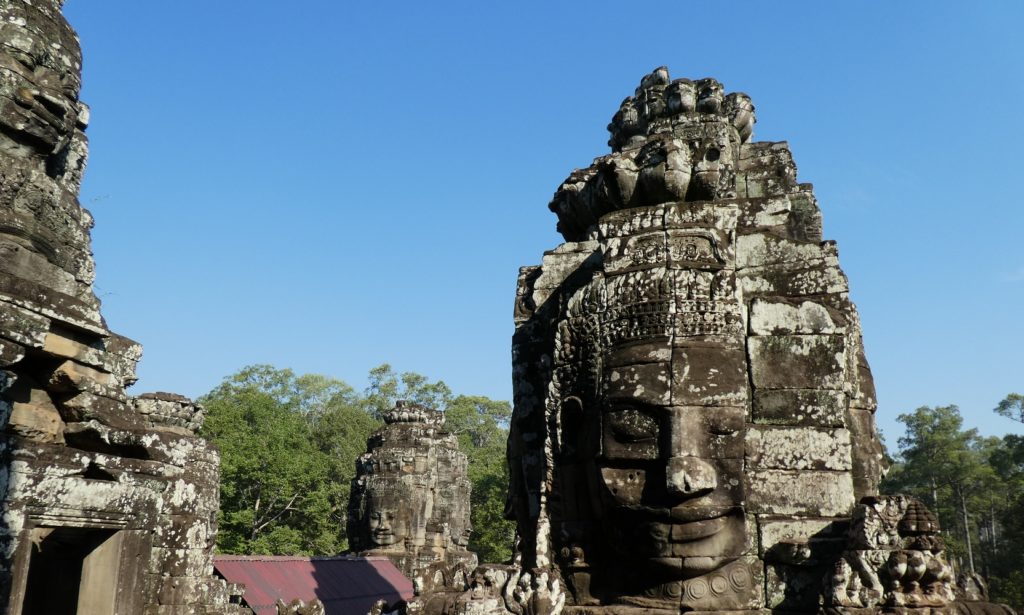Angkor Thom – The ancient capital of Cambodia
Sometimes it is associated with a temple, but Angkor Thom is actually a former capital of modern Cambodia. For those interested, “Angkor” stands for city and “Thom” for big.

Face in the Bayon Temple inside the city of Angkor Thom
The city, as well as many of its landmarks were built under King Jayavarman VII. He is known as one of the greatest kings of the Khmer people and is responsible for many buildings within his thirty-year reign. Among them especially his capital Angkor Thom. The king had the city built on the territory of its predecessor (Yasodharapura). More precisely, on the northern part. Which shows that the new capital was somewhat smaller, but still larger than any European city from the Middle Ages. The buildings, which of course also characterize the cityscape to this day, are based on Buddhism. Quite different from the previous kings, who were dedicated to Hinduism. King Jayavarman VII gained his reputation as a young army commander who managed to drive out the invaders during the four-year war.
The cityscape on the map corresponds to a square aligned in all four cardinal directions. To defend the city, a wall 8 meters high and 12 km long was built, which was again surrounded by a deep (6m) and wide (100m) moat. In total, the wall has 5 gates, 4 of which each lead to a sanctuary of the city – the Bayon. The 5th gate is special because it directly forms a road to the royal palace.
Besides the Royal Palace, there are other very important buildings of this period, such as the Elephant Terrace and the Terrace of the Leper King. The Elephant Terrace, for example, has been preserved to this day and, as its name suggests, depicts a life-size elephant. The royal palace, which is not completely preserved today, used to be located above this terrace. The Terrace of the Leper King directly adjoins and depicts the figures of the gods. There are some stories about the origin of the figures. Some say that this is King Jayavarman I, who died of leprosy and now rests as a headless statue on the terrace. Others say that this is the Hindu god of death, Yama.
Today the area is mainly forest, many of the historical buildings are no longer there, because they were built of wood and decayed with time. The stone buildings, however, are preserved and are visited and admired by tourists every year.